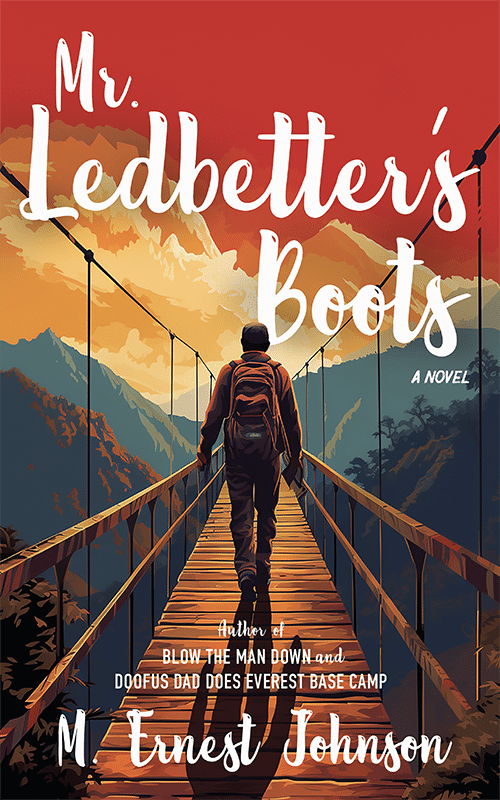When most people think of international trekking destinations, they tend to conjure the high-altitude routes of the Himalayas, the rugged Alps of Central Europe, or the Inca foot trails of the Andes. But nestled in Southeastern Europe, the Balkans offer some of the most breathtaking and untouched trekking routes in the world. In particular, Hobnail’s Montenegro’s Three-Jewel Odyssey and Peaks of the Balkans trek (which crosses Albania and Montenegro) present a unique and immersive experience that adventure travelers should move to the top of their bucket lists.
Why hike the Balkans?
Long overshadowed by their Western European neighbors, the Balkans are a hidden gem in the trekking world. Here, you’ll find pristine mountain ranges, deep forests, crystal-clear rivers, and remote villages that have preserved their traditional ways of life for centuries. Unlike the often-crowded trails of Nepal or the Alps, these routes provide solitude and an off-the-beaten-path experience. (And for the record, the trails in Nepal and the Alps are very much worth doing — they’re just better known and, therefore, more widely traveled.)
Montenegro’s Three-Jewel Odyssey takes you through three incredible national parks — Durmitor, Biogradska Gora, and Prokletije — offering varied landscapes and experiences. From whitewater rafting on the Tara River to hiking in one of Europe’s last virgin forests, this trek is perfect for those who want adventure mixed with cultural immersion.
The Peaks of the Balkans trek, first created in 2012, weaves through Montenegro and Albania (and sometimes, Kosovo) and offers a rare glimpse into a region that was once inaccessible due to political barriers. Today, the trail stands as a symbol of unity and peace, bringing together hikers from around the world to explore its stunning valleys, rugged peaks, and remote shepherd villages.
Difficulty Levels and Trekker Requirements
Both the Three-Jewel Odyssey and the Peaks of the Balkans treks are designed for experienced hikers who are comfortable with multi-day trekking through mountainous terrain. The difficulty level is moderate to strenuous, with daily hikes ranging from 5 to 10 miles and varying elevation gains. The trails include steep ascents, rocky paths, and occasional high-altitude crossings, requiring good physical fitness and endurance. While no technical climbing skills are needed, we highly recommend prior trekking experience in similar conditions.
Safety and the Impact of the Russia-Ukraine War
One of the first questions we’re asked about the Balkans is, “Is it safe?” The answer is a resounding yes. Montenegro and Albania are both considered safe for travelers, with low crime rates and welcoming local populations. The trails themselves are well-marked, and, of course, our highly trained and experienced local guides ensure that trekkers navigate the terrain safely.
The Russia-Ukraine conflict has had little to no direct impact on this region, thank goodness. While some countries in Eastern Europe have been affected economically or politically, the Balkans have remained stable, with tourism continuing to thrive. In fact, due to their affordability compared to Western Europe, more travelers are looking to the Balkans as a premier trekking destination.
Note: Hopefully, by the time you’re reading this, hostilities will have ended. Fingers crossed!)
Food and Hospitality in the Balkans
If there’s one thing Balkan culture is known for, it’s hospitality. The region has a long tradition of welcoming guests with open arms, and trekkers often find themselves invited into homes for traditional meals.
In Montenegro, expect hearty mountain fare, including čevapi (grilled sausages), kajmak (a creamy dairy delicacy), and pršut (smoked ham). Albanian cuisine is just as rich, with influences from Mediterranean and Ottoman traditions. You’ll enjoy byrek (savory pastries), tavë kosi (baked lamb with yogurt), and freshly baked bread served with local honey and cheese. In both countries, homemade rakija (fruit brandy) is a common way to toast new friendships.
Mountain guesthouses and homestays provide a cozy, authentic experience. Unlike the commercialized mountain lodges of the Alps, staying in the Balkans often means sharing meals with local families, learning about their traditions, and experiencing genuine hospitality.
The History of Trekking in the Balkans
Unlike Nepal or the Alps, which have well-established trekking industries, the Balkans were relatively undiscovered by hikers until the past decade. During much of the 20th century, political instability, communist rule, and conflicts in the 1990s made the region largely inaccessible. However, since the early 2000s, tourism has grown, and in 2012, the Peaks of the Balkans trail was officially established.
This route was designed to reconnect the once-divided nations of Montenegro, Albania, and Kosovo by allowing trekkers to move freely between them. Today, the trail stands as a testament to the region’s resilience, history, and breathtaking natural beauty.
To wrap up…
For those seeking a trek that’s both challenging and rewarding, the Balkans are an ideal destination. Montenegro’s Three-Jewel Odyssey provides an incredible blend of adventure and history, while the Peaks of the Balkans trek takes you through a landscape largely untouched by modern tourism. With its warm hospitality, incredible food, and rich cultural history, this region is quickly emerging as one of the world’s top trekking destinations. Ignore your bucket list no longer — your adventure in the Balkans awaits!























Recent Comments